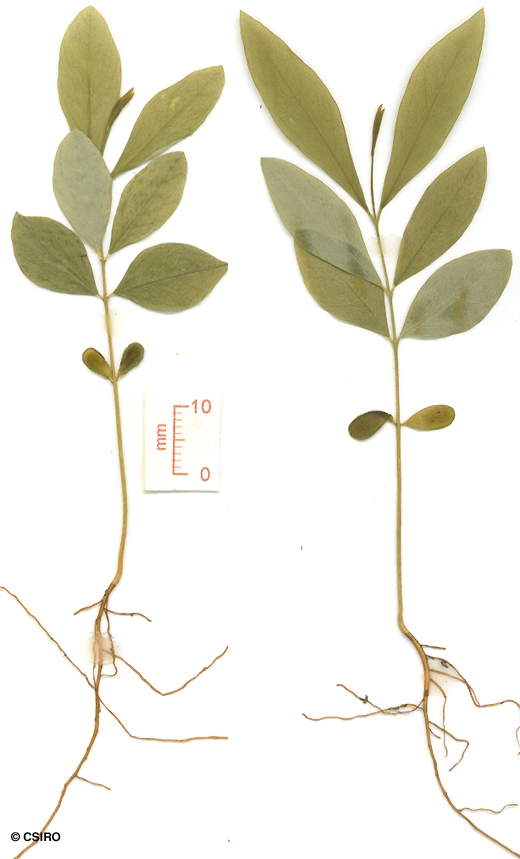Australian Tropical Rainforest Plants - Online edition
Wikstroemia indica (L.) C.A.Mey.






Meyer, C.A.A. von (1843) Bulletin de la Classe Physico-Mathematique de l'Academie Imperiale des Sciences de Saint-Petersbourg 1: 358.
Wikstroemia; Tie Bush
Usually flowers and fruits as a shrub 1-4 m tall.
Perianth tube (hypanthium) about 4-8 mm long, perianth lobes about 1.5-2 mm long. Stamens eight in two whorls one above the other on the inner surface of the perianth tube (hypanthium). Pollen orange. Disk lobed. Glands present at the base of the ovary. Style very short or absent. Stigma capitate, globular.
Fruits ellipsoid, about 5-7 mm long, perianth remnants present at the base of the fruit. Seed surrounded by a white or pale cellular layer. Fruits and seeds emit an unpleasant hydrocyanic odour when crushed. When ripe or partly ripe a much favoured food for the Brown Cuckoo-dove (Macropygia amboinensis).
Cotyledons thick and fleshy, about 5-6 x 4 mm, petioles very short, about 1 mm long. Hypocotyl glabrous, stem above the cotyledons clothed in straight, appressed, white hairs. First pair of leaves opposite and elliptic. At the tenth leaf stage: leaves +/- elliptic, glabrous, venation obscure. Stem bark strong and fibrous when stripped. Seed germination time 17 to 42 days.
Occurs in NT, CYP, NEQ, CEQ and southwards as far as coastal central New South Wales. Altitudinal range from near sea level to 900 m. Often grows in open forest or wet sclerophyll forest but also found on rain forest margins, in rain forest regrowth, closed forest on sand dunes or some of the drier forms of rain forest. Also occurs in Asia, Malesia and the Pacific islands.
The leaves of this species are poisonous to cattle. The fruits are more poisonous than the leaves. Cases have been reported of children dying after eating the fruits of this plant. Everist (1974).
Leaf and stem material of this species was active against some tumors. Collins et al. (1990).
This species has been used medicinally in India, Fiji and China. Cribb (1981).





